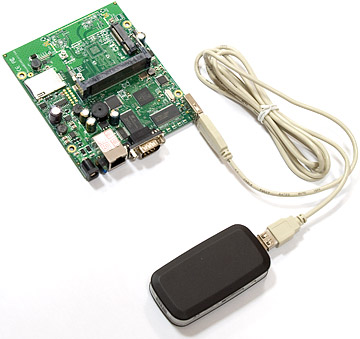Install Mikrotik From Usb
How to install RouterOS? Description: To install the RouterOS with a CD you will need a CD-writer and a blank CD. Burn the CD-image (an.iso file) to a CD. Follow the instructions to install RouterOS using CD-Install: 1. After downloading the CD image you will have an ISO file on your computer: MT ISO image 2. Open a CD Writing software, like Ahead NERO as in this example: Nero Burning ROM 3. In the program, choose Burn Image entry from the Recorder menu (there should be similary named option in all major CD burning programs): BurnImage option 4.

If you interested to install MikroTik OS on a physical machine, download MikroTik OS ISO and burn the ISO in a blank CD or DVD or in a USB flash drive and then follow my below steps to install MikroTik OS ISP on your physical machine. Boot your PC or Server from your bootable media such as CD or DVD. I got a mikrotik routerboard 950G and i downloaded netinstall v6.8 but i cannot install the routerOS into my computer. Fonepaw Iphone Data Recovery Serial on this page. Can anybody help me out? Home » Linux » Create USB Linux Installer / USB Bootable. Create USB Linux Installer / USB. 12 64-bit installation media on a 8GB USB. Address in Mikrotik. Install Mikrotik di USB Flashdisk? Ikuti Tutorial Cara Install Mikrotik di USB FlashDisk berikut ini.
Select the recently extracted ISO file and click Open: Open image 5. Finally, click Burn button: Press Burn button 6. Set the CDROM as the primary boot device in router's BIOS. After booting from CD you will see a menu where to choose packages to install: Welcome to MikroTik Router Software installation Move around menu using 'p' and 'n' or arrow keys, select with 'spacebar'. Select all with 'a', minimum with 'm'.

Press 'i' to install locally or 'r' to install remote router or 'q' to cancel and reboot. [X] system [ ] isdn [ ] synchronous [X] ppp [ ] lcd [ ] telephony [X] dhcp [ ] ntp [ ] ups [X] advanced-tools [ ] radiolan [ ] web-proxy [ ] arlan [ ] routerboard [ ] wireless [ ] gps [X] routing [ ] hotspot [X] security Follow the instructions, select packages you need, and press 'i' to install the software. You will be asked for 2 questions: Warning: all data on the disk will be erased! [y/n] Press [Y] to continue or [N] to abort the installation. Do you want to keep old configuration? [y/n]: You should choose whether you want to keep old configuration (press [Y]) or to erase the configuration permanently (press [N]) and continue without saving it. For a fresh installation, press [N].
Creating partition. Formatting disk. The system will install selected packages. After that you will be prompted to press 'Enter'. Before doing that, remove the CD from your CD-Drive: Software installed. Press ENTER to reboot Note: after the installation you will have to enter the Software key.
Said by: on the routerboards, they use a NAND type memory, as do modern USB and CF cards. MTBF is, therefore, going to be approximately the same for all 3 types. IIRC, the expectation is around 100k write cycles.I wanted to clarify that exact same model '100K write cycle' flash device can become totally unwritable after just a few days if OS does not implement 'wear leveling' algorithm. Even with 'wear leveling'. The implementation varies between OS/filesystems and users write different amount of data per day. Days until drive becomes 'unwritable' = (datasheet write cycles) x (file system overhead) x [ (total bytes in drive) / (average bytes written per day) ] Moral: don't go crazy writing traffic logs onto a flash drive! Butch, could you kindly check what kind of 'wear leveling' algorithm is supported in new versions of Mikrotik RouterOS?
Also what is their 'file system overhead ' it will be a fraction like 0.7 for a DOS/FAT system. For USB Flash drives, Toshiba calculated that a 10,000 write cycle endurance would enable customers to completely write and erase the entire contents once per day for 27 years, well beyond the life of the hardware.You can see that Toshiba simply calculated (10,000 erase cycles / 365 days = 27 years ) which implies re-writing 1GB/day to a 1GB drive. This is OK for digital cameras and USB mass storage. But imagine an embedded system is updating temp files and log files many times per second effectively re-writing 1TB/day to a 1GB drive. That will make a 10,000 cycle device un-writable after less than 10 days using the proper formula.
Which BTW applies to all flash drives out there. Said by: Butch, could you kindly check what kind of 'wear leveling' algorithm is supported in new versions of Mikrotik RouterOS?
Also what is their 'file system overhead ' it will be a fraction like 0.7 for a DOS/FAT system. As sibisties said, this is in the firmware for the flash card/chip. I agree with your assessment mathematically, but in practice, it doesn't seem to work that way. That 100k write cycles may be old news, too. Docklight 2 0 Serial. I am remembering from a long time ago and just went to check my main information source (google) and that number still exists. As I said, though, in practice, I have not seen an issue with write cycles. Said by: I agree with your assessment mathematically, but in practice, it doesn't seem to work that way.I agree that datasheet cycles are improving and quality device makers tend to be pessimistic, but the expected lifetime still follows that equation.